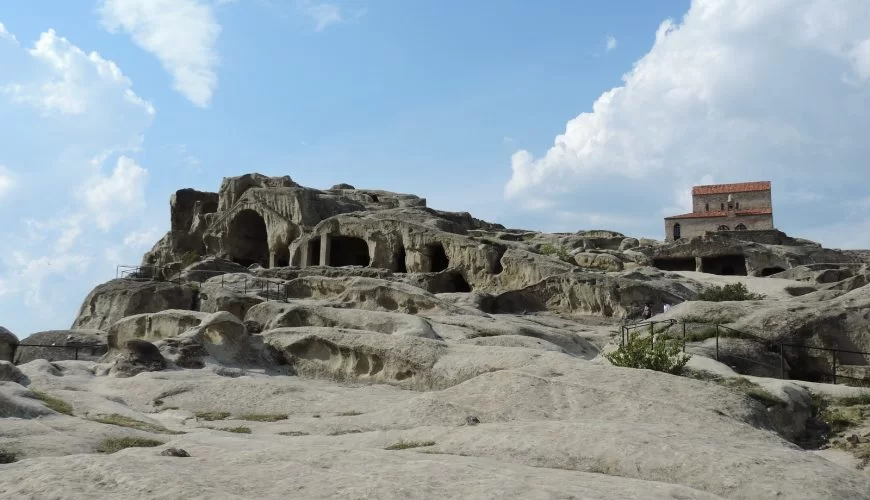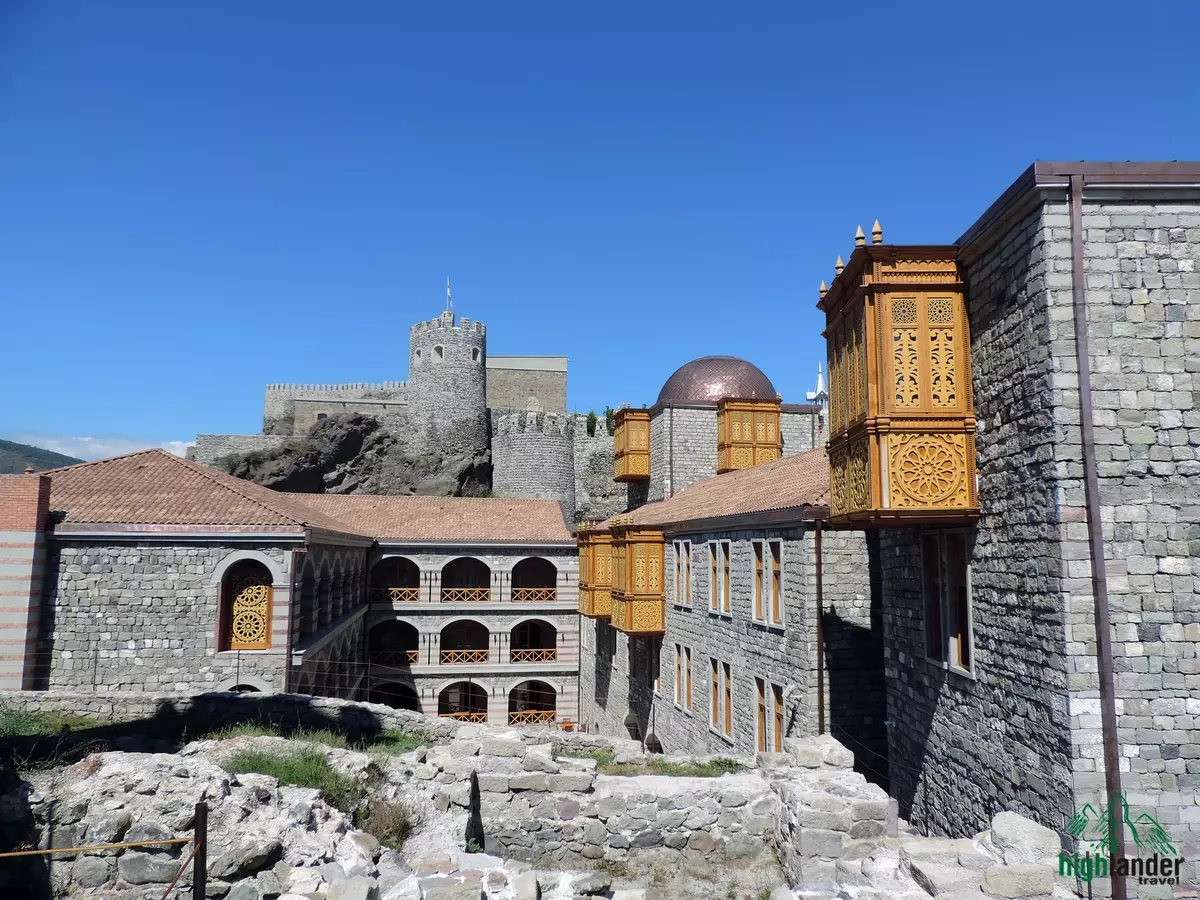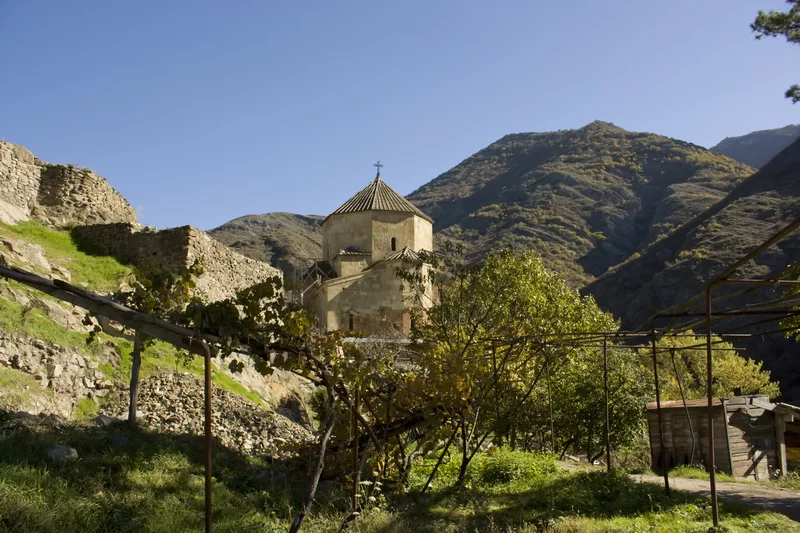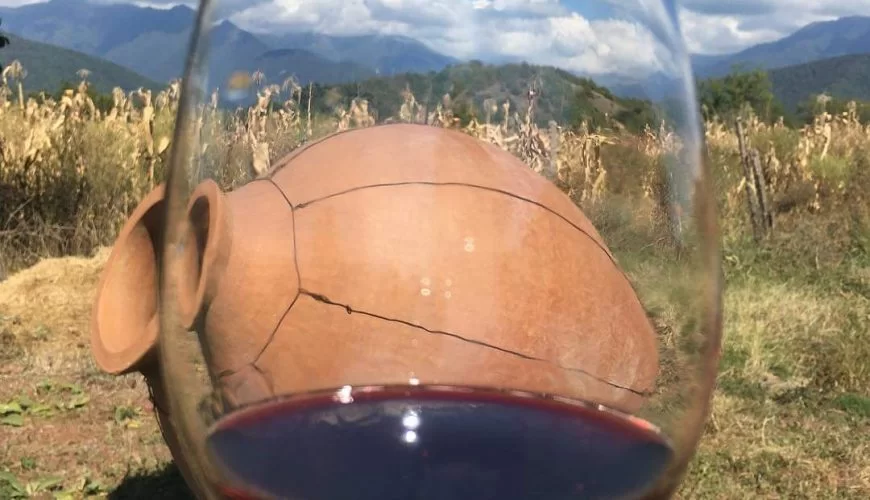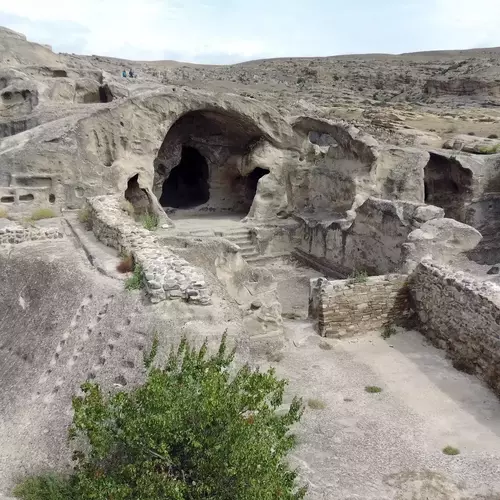
Premium & Incredible Tour Packages with Hotel Stays!
Charming Mtskheta, Gori and Uplistsikhe tour
Price for one tour per person
$148
tour features
Tour Duration: 1 Day
Tour Location:Svaneti
Tour highlights: Full Day (8-9 hours) | Starting at: $50 per person | Location: Central Georgia (Kartli Region)
Tour is available
Why This Journey Is Extraordinary
Travel through three millennia of Georgian history in a single day—from a 2,600-year-old cave city carved into living rock, through medieval spiritual centers recognized by UNESCO, to the controversial legacy of the 20th century’s most powerful dictator.
This isn’t just sightseeing—it’s time travel. Walk through chambers where pagan priests performed ancient rituals. Stand in the cathedral where Georgian kings were crowned. Explore the surprisingly modest childhood home of Joseph Stalin. Each stop reveals a different chapter in Georgia’s complex, fascinating story.
Perfect for: History enthusiasts, archaeology lovers, photographers, cultural explorers, and anyone seeking to understand Georgia’s layered past from ancient paganism through Christianity to the Soviet era.
Tour Highlights
✓ Uplistsikhe Cave City – 2,600-year-old rock-hewn town with temples, halls, and ancient streets
✓ UNESCO World Heritage Mtskheta – Georgia’s spiritual heart and ancient capital
✓ Jvari Monastery – 6th-century architectural masterpiece with panoramic views
✓ Svetitskhoveli Cathedral – Georgia’s holiest site and royal burial ground (Optional)
✓ Stalin Museum Complex – Controversial but fascinating look at Soviet history
✓ Gori Fortress – Medieval citadel overlooking the Mtkvari River valley
✓ Traditional Georgian Lunch – Authentic Kartli cuisine
✓ Optional Wine Tasting – Sample wines from the historic Kartli region
Your Time-Travel Journey
08:30 AM – Departure from Tbilisi
Begin your journey west from Tbilisi into the Kartli region—Georgia’s historical heartland, where kingdoms rose and fell, where Christianity first took root, and where some of humanity’s oldest urban settlements were carved from solid rock.
The drive takes you through changing landscapes: from Tbilisi’s urban sprawl to the agricultural plains of Shida Kartli, with the Greater Caucasus mountains forming a dramatic northern backdrop.
09:00 AM – Mtskheta: Georgia’s Spiritual Capital
Jvari Monastery – Where Christianity Meets Dramatic Beauty
Your first stop is the iconic Jvari Monastery, perched on a rocky mountaintop at the confluence of the Aragvi and Mtkvari rivers. Built in the 6th century, this UNESCO World Heritage monument represents the pinnacle of early Georgian church architecture.
The Sacred Site:
In the 4th century, after St. Nino converted King Mirian III to Christianity, the newly baptized king erected a wooden cross on this hilltop—a former pagan worship site. The cross performed miracles according to tradition, drawing crowds of new converts. Two centuries later, King Stephanoz I built this exquisite church around the site of King Mirian’s original cross.
Architectural Excellence:
Jvari’s perfectly proportioned tetraconch design (a square with four semicircular apses) influenced Georgian church architecture for centuries. Despite 1,400 years of earthquakes, invasions, and weathering, the structure remains remarkably intact—a testament to medieval engineering mastery.
The View:
From Jvari’s terrace, one of the Caucasus region’s most celebrated vistas unfolds: the silver-green Aragvi meets the muddy Mtkvari far below, ancient Mtskheta spreads across the valley, and mountains rise to the horizon. Georgian Romantic poet Mikheil Lermontov immortalized this panorama in his poem “Mtsyri.”
Time at Jvari: 30-40 minutes
Svetitskhoveli Cathedral – The Living Pillar
Descending to Mtskheta town, you’ll enter Svetitskhoveli Cathedral—Georgia’s Westminster Abbey, coronation church, and most sacred site.
The Legend of the Living Pillar:
When Christ was crucified, a Georgian Jew named Elias purchased Christ’s robe from a Roman soldier and brought it to Mtskheta. His sister Sidonia took the robe and, overcome with emotion, died clutching it. The robe couldn’t be separated from her, so she was buried with it.
From her grave grew a sacred cedar tree. Centuries later, when Georgia converted to Christianity, King Mirian ordered the tree cut to build the first church. But the cedar’s stump refused to move—until St. Nino prayed through the night. The stump then rose into the air, floating and glowing with miraculous light before descending to become the church’s central pillar—the “living pillar” (Svetitskhoveli) that gives the cathedral its name.
Inside the Cathedral:
- The Sacred Pillar – Draped in ornate fabric, marking Christ’s robe burial site
- Royal Tombs – Final resting place of Georgian kings, including the last king, Heraclius II
- Medieval Frescoes – Some dating back centuries, depicting biblical scenes and Georgian saints
- Intricate Stone Carvings – Every surface tells stories through medieval artistry
- Living Worship – This remains Georgia’s most important active church
Built in the 11th century by architect Arsukisdze, Svetitskhoveli represents Georgian medieval architecture at its finest. Despite centuries of damage from invasions and earthquakes, careful restoration maintains its historical character while preserving its role as a living place of worship.
Cultural Note: Svetitskhoveli served as Georgia’s coronation cathedral. Though Georgia no longer has a monarchy, this remains the nation’s spiritual center—many Georgian couples dream of marrying here.
Time at Svetitskhoveli: 40-50 minutes
11:30 AM – Journey to Gori
Continuing west along the main highway, we travel through the Kartli plains—Georgia’s agricultural heartland where wheat, corn, and grapes have been cultivated for millennia. The Lesser Caucasus mountains rise to the south, while the Greater Caucasus dominates the northern horizon.
Your guide will share stories of Kartli’s strategic importance throughout Georgian history—this central corridor connected eastern and western Georgia, making it both the country’s strength and its vulnerability to invaders.
12:30 AM – Gori: Stalin’s Hometown
The city of Gori, administrative center of the Shida Kartli region, sits at a historic crossroads. While the city’s history stretches back to antiquity (the fortress dates to the 7th century), Gori is internationally known for one reason: it’s the birthplace of Joseph Stalin, who became the Soviet Union’s most powerful—and most controversial—leader.
Stalin Museum Complex
Important Context:
The Stalin Museum presents a complex historical experience. For many, Stalin represents one of history’s most brutal dictators, responsible for millions of deaths through purges, forced collectivization, and gulags. For some older Georgians and Russians, memories are more nuanced. This museum, established during the Soviet era, presents a largely uncritical view of Stalin’s life.
We present this site as a historical artifact itself—a window into how Stalin was portrayed during and after the Soviet period. Your guide will provide balanced historical context, discussing both Stalin’s role in Soviet victory in World War II and the immense human cost of his regime.
What You’ll See:
- Stalin’s Birth House – The modest two-room cottage where Ioseb Jughashvili was born in 1878
- Main Museum Building – Three floors of exhibits, including:
- Stalin’s childhood and seminary years
- Revolutionary activities and rise to power
- Personal belongings, gifts from world leaders, and memorabilia
- Photographs documenting his life and the Soviet era
- One of twelve existing death masks of Stalin
- Stalin’s Personal Railway Carriage – The armored train car used for his travels, complete with a luxurious interior
The Experience:
The museum’s Soviet-era presentation style is itself historically significant—preserved almost exactly as it was during Stalin’s lifetime and the decades after. Walking through feels like stepping into a time capsule of Soviet propaganda and personality cult.
Photography: Allowed throughout (small fee may apply)
Time at Stalin Museum: 60-75 minutes
Gori Fortress (External Viewing)
From the museum grounds, you’ll see the Gori Fortress crowning the hill above the city. This medieval citadel dates to the 7th-13th centuries and offers commanding views of the Mtkvari River valley. While we typically view it externally due to time constraints, those interested in ascending can discuss extending the tour.
01:30 PM – Traditional Georgian Lunch
Enjoy authentic Kartli regional cuisine at a local restaurant. This agricultural heartland is known for hearty, flavorful dishes.
Typical menu:
- Khinkali – Georgian dumplings (Kartli style is particularly renowned)
- Khachapuri – Cheese-filled bread
- Mtsvadi – Grilled meat skewers
- Lobio – Bean stew with cornbread (mchadi)
- Fresh seasonal salads with herbs and walnuts
- Georgian wine from local vineyards
Vegetarian and dietary-specific options available.
Lunch duration: 60 minutes
02:45 PM – Uplistsikhe: The Ancient Rock City
The day’s archaeological crown jewel awaits: Uplistsikhe, one of the oldest urban settlements in the entire Caucasus region and one of the world’s most remarkable rock-hewn complexes.
Journey to Another Era
As you approach along the Mtkvari River, a massive rocky outcrop rises from the valley floor. Carved into this volcanic formation is Uplistsikhe (“the Lord’s Fortress”)—an entire city hewn from living rock over 2,600 years ago.
Park at the base and walk across the modern bridge spanning a small gorge. The short approach builds anticipation. Then you climb the ancient stone steps, and suddenly you’re walking streets that were carved when the Persian Achaemenid Empire dominated the region, when Rome was just beginning its expansion, when Buddha walked in India.
The Ancient Cave City
Historical Significance:
Founded in the 6th century BC, Uplistsikhe served as a major political, religious, and cultural center of pre-Christian Kartli. At its peak (around the 9th-10th centuries AD), up to 20,000 people lived in this rock city. It functioned as:
- Pagan Temple Complex – The spiritual center of sun-worshipping Kartli before Christianity
- Strategic Fortress – Protecting the vital Silk Road trade route along the Mtkvari
- Royal Residence – Kings and nobility maintained palaces here
- Commercial Hub – Markets and merchant quarters served caravans
The city was finally abandoned in the 13th century after devastating Mongol invasions, leaving this extraordinary archaeological site frozen in time.
What You’ll Explore
Your guide will lead you through the sprawling complex, revealing:
The Queen’s Hall (Royal Reception Hall):
The largest and most impressive chamber, featuring a barrel-vaulted ceiling unique among rock-cut structures. This hall hosted royal ceremonies, diplomatic receptions, and important gatherings. Notice the carved wine presses, pillars, and benches—all hewn from the solid rock.
The Ancient Theatre:
One of Georgia’s oldest performance spaces, carved into the hillside. Imagine ancient audiences gathering here for ritual performances, religious ceremonies, or civic announcements. The acoustics remain impressive after 2,600 years.
Temple Complexes:
Multiple temples dedicated to pre-Christian Georgian sun deities. You can still see:
- Carved altars and ritual spaces
- Channels for libations and sacrifices
- Sun-worship symbols etched into stone
- The transition to Christian use (a small basilica was later carved here)
Ancient Streets & Dwellings:
Walk the same pathways used for over a millennium. Peer into residential caves where families lived, worked, and raised children. Notice:
- Carved niches for storage and possessions
- Smoke-blackened ceilings from cooking fires
- Windows positioned to catch maximum light
- Drainage channels carved into the rock
The Pharmacy:
A chamber where ancient healers prepared medicines, with carved mortars and storage niches for herbs and compounds.
Wine Cellars (Marani):
Georgia’s 8,000-year wine tradition is evident here—carved wine storage rooms with qvevri (large clay vessels) burial sites. Wine production was central to Uplistsikhe’s economy and ritual life.
The Secret Tunnel:
A narrow passage descending through the rock to the river below—an emergency escape route and water access during sieges. (Partially accessible, depending on conditions)
The Christian Basilica:
The 10th-century Uplistsikhe Church, built atop the ancient pagan complex, symbolizes Georgia’s religious transformation. Unlike the carved structures around it, this is a traditional stone-built church.
The Experience
Walking through Uplistsikhe is visceral and extraordinary. The rock still bears ancient chisel marks. Sunlight streams through carved windows. Wind whistles through empty halls that once echoed with prayers in long-forgotten languages.
Stand in the Queen’s Hall and feel the weight of 2,600 years. Look out from the heights across the Mtkvari valley and imagine this rock bustling with 20,000 inhabitants—a vertical city carved from stone, thriving when most of Europe lived in wooden huts.
Photography Paradise:
Uplistsikhe offers endless composition opportunities:
- Dramatic carved doorways and windows
- Play of light and shadow in ancient chambers
- Panoramic valley views from elevated terraces
- Textured rock surfaces showing millennia of weathering
- Contrast between carved architecture and natural rock
Physical Requirements:
Exploring Uplistsikhe involves:
- Climbing uneven stone steps (both ancient and modern)
- Walking on sloped rock surfaces (can be slippery when wet)
- Ducking through low doorways
- Ascending and descending between levels
- Moderate fitness required; not suitable for those with serious mobility limitations
Safety:
While generally safe, the site requires attention:
- Watch your step on uneven surfaces
- Some edges have drops—stay aware
- Surfaces can be slippery when wet or icy
- Wear appropriate footwear with good grip
- Follow your guide’s instructions
Time at Uplistsikhe: 90-120 minutes
05:00 PM – Optional Wine Tasting
For wine enthusiasts, we can arrange a stop at a local Kartli region winery on the return journey. The Kartli wine region, while less famous internationally than Kakheti, produces excellent wines with ancient roots.
What’s Included:
- Tasting of 4-5 Georgian wines (including qvevri-aged wines)
- Tour of traditional wine cellar (marani)
- Explanation of Georgian winemaking traditions
- Light snacks (cheese, bread, churchkhela)
Cost: Additional $20-25 per person (paid directly or pre-arranged)
Duration: 45-60 minutes
This is optional and can be added based on your interest and energy level after a full day of exploration.
06:30-07:00 PM – Return to Tbilisi
Satisfied and full of impressions from three distinct historical epochs, we make our way back to Tbilisi. Watch the sunset paint the Caucasus mountains as you reflect on a day that spanned from ancient paganism through medieval Christianity to 20th-century totalitarianism.
Your guide remains available for questions, recommendations for your remaining time in Georgia, or simply companionable conversation about Georgian history and culture.
What Makes This Tour Exceptional
Three Eras, One Journey
Few tours anywhere connect such dramatically different historical periods. From 6th-century BC paganism to 6th-century AD Christianity to 20th-century Soviet history—you’ll experience the full sweep of Georgian civilization.
Uplistsikhe Focus
Unlike tours that rush through Uplistsikhe in 30 minutes, we dedicate proper time to this extraordinary site. Your guide explains the architecture, history, and significance while you genuinely explore this ancient wonder.
Balanced Historical Context
We don’t shy away from complexity. Stalin’s legacy is difficult, and we present both historical facts and multiple perspectives. This isn’t propaganda—it’s honest engagement with challenging history.
Expert Local Guides
Our guides combine academic knowledge with storytelling ability. They read ancient inscriptions, explain architectural techniques, and bring forgotten eras to life with engaging narratives.
Flexible Pacing
Interested in spending more time at Uplistsikhe? Fascinated by the Stalin Museum? Want to skip Stalin entirely? We adapt to your interests within the day’s framework.
Small Groups
A maximum of 8 people ensures everyone can hear, ask questions, and receive personal attention. This isn’t a crowded bus tour—it’s an intimate historical journey.
PAX | 2 | 4 | 6 | 8 | 10 |
Price USD | 70$ | 60$ | 50$ | 45$ | 40$ |
What’s Included
✓ Professional English-speaking guide (Other languages are available)
✓ Comfortable transportation (modern vehicle with AC)
✓ Hotel pickup and drop-off (central Tbilisi)
✓ Entrance fee in Uplistsikhe
✓ Bottled water throughout the day
✓ Small group experience (maximum 8 people)
What’s Not Included
✗ Wine tasting experience ($20-25 per person if added)
✗ Traditional Georgian lunch (main course, sides, bread, non-alcoholic beverage)
✗ Additional food and alcoholic beverages beyond the included lunch
✗ Personal expenses and souvenirs
✗ Tips for guide (appreciated but optional)
✗ Travel insurance
Meeting Point: Your hotel in central Tbilisi or agreed pickup location
Departure Time: 08:30 AM
Return Time: Approximately 06:30-07:00 PM
Duration: 8-9 hours (full day)
Distance: Approximately 200 km round trip
Activity Level: Moderate (involves climbing stairs and walking on uneven surfaces)
What to Wear & Bring
Essential:
- Comfortable walking shoes with good grip (Uplistsikhe requires sturdy footwear)
- Modest clothing for churches (shoulders and knees covered)
- Sun protection (hat, sunscreen, sunglasses)
- Light jacket or sweater (churches can be cool)
- Camera with charged batteries
- Small backpack for personal items
- Water bottle (refills provided)
Recommended:
- Cash (GEL) for personal purchases and optional wine tasting
- Comfortable clothes suitable for climbing and exploring
- Headscarf for women (for church visits; can borrow at sites)
Church Dress Code:
- Women: Shoulders and knees covered; long skirts preferred
- Men: Long pants; no tank tops
- Everyone: Remove hats inside churches
Physical Requirements & Accessibility
Activity Level: Moderate
What’s Involved:
- Walking on uneven stone surfaces and ancient steps
- Climbing to various levels at Uplistsikhe (numerous stairs)
- Standing for periods while the guide explains the sites
- Approximately 3-4 km total walking throughout the day
Accessibility:
Uplistsikhe’s ancient rock-cut nature makes it challenging for those with mobility limitations. The site involves significant stair climbing and uneven surfaces. If you have concerns, please discuss with us—we can suggest adaptations or alternative tours.
Age Suitability:
Suitable for ages 8+. Children find Uplistsikhe particularly exciting (it feels like an adventure game!). Children under 12 receive a 30% discount.
Important Notes
Uplistsikhe Weather Considerations:
- Hot Weather: The rock absorbs and radiates heat. Summer visits can be very hot—bring extra water and sun protection.
- Wet Weather: Rock surfaces become slippery when wet. We provide honest assessment of conditions and may recommend rescheduling in heavy rain for safety.
- Winter: Can be icy. Special caution required; microspikes or crampons recommended.
Stalin Museum Context:
We recognize the Stalin Museum is controversial. Some visitors find it essential for understanding 20th-century history; others prefer to skip it given Stalin’s role in mass repression and deaths. We can adjust the itinerary if you prefer more time at Uplistsikhe and less (or no) time at the Stalin Museum.
Photography:
- Allowed at all sites (small additional fee at Stalin Museum)
- Uplistsikhe offers spectacular photo opportunities
- Be respectful in active churches—ask before photographing worshippers
- Your guide can suggest the best angles and lighting
Best Time to Visit
Spring (April-May):
Perfect weather, wildflowers blooming, excellent for Uplistsikhe exploration. Popular season.
Summer (June-August):
Warm to hot. Uplistsikhe can be very hot midday—early starts recommended. Bring extra sun protection.
Autumn (September-October):
Ideal weather, beautiful light for photography, and the harvest season adds atmosphere. Peak season for cultural tours.
Winter (November-March):
Fewer tourists, dramatic winter light. Uplistsikhe can be cold and potentially icy; check the conditions. Churches are atmospheric in winter.

